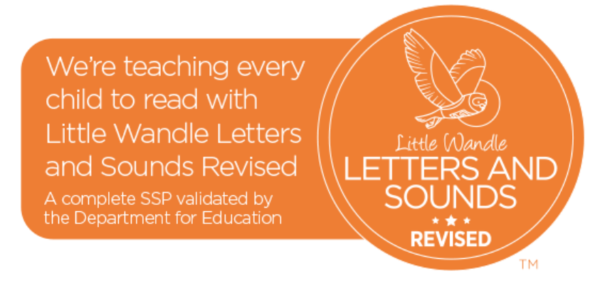Phonics is breaking down the letters that make up words into the sounds that they make, therefore helping many children learn to read and spell. Phonics is recommended as the first strategy that children should be taught in helping them learn to read. Phonics runs alongside other teaching methods to help children in the early stages of learning to read develop vital reading skills and give them a real love of reading, hopefully for life.

At Sutton Bonington Primary School, reading skills are taught using synthetic phonics and the school follows the Little Wandle Systematic Synthetic Phonics programme. This provides us with a multi-sensory approach that accommodates all learning styles. The children are taught within the phase that is appropriate to their level of development. They are assessed on a regular basis and teaching groups are sorted accordingly. The phonemes (sounds) are systematically taught before the children are shown how to blend them for reading and segmenting them for writing. There are 44 phonemes in English which the children must learn. When a sound is written, it is known as a grapheme. Alongside this, the children are taught the ’high frequency words’ and ‘tricky words’ (those words which do not entirely follow the phonic rules). At the end of Year 1, children complete a Phonics Screening Check required by the Government to assess where they are. Staff receive regular training in the teaching of phonics which enables them to deliver interesting, interactive sessions that engage and motivate the children.
To complement our phonics scheme, children are provided with reading books from the Big Cats Little Wandle reading scheme. These books are organised into groups which are matched to a child’s knowledge of phonics. Within each group, children will first read books which are decodable to ensure that they develop their confidence and fluency further. Books cover both fiction and non-fiction. Once children reach the final stages of our phonics scheme, they will be able to choose from a wider range of books including short chapter books and well known classics such as stories by Roald Dahl. Within our classrooms, children also have the opportunity to read stories by well known authors, non-fiction texts related to their topics and key texts (including poetry and stories which promote diversity and equality) for each year group.
More information about how we teach Little Wandle in Reception and Year 1 can be found below. By the start of Year 2, it is expected that most children will have finished the programme and will look at different spelling patterns through our Phase 6 Phonics sessions. Please have a look at the documents, links and video clips.
